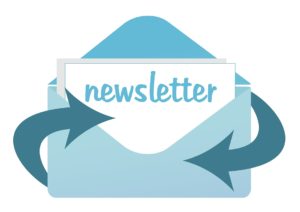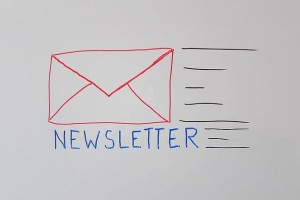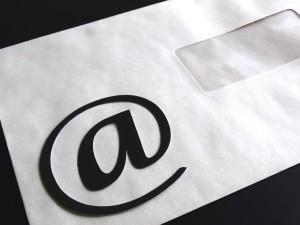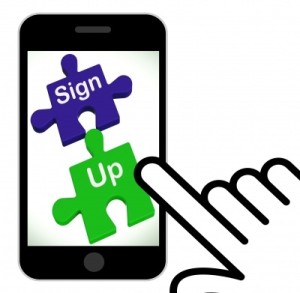4 Tips To Skyrocket Your Email List Using Email Popups

How can email popups help you grow your mailing list?
When you’re using email marketing to sell your products you need to constantly grow your email list. This can be challenging to do. However, popups can be very effective at adding subscribers to your list.
There are several ways you can use popups to increase your email list, here are some of the best tips to help you out.
1. Offer Something Valuable
When visitors to your website give you their email address, they will want something in return. This can be a free gift, a discount, or perhaps an ebook. What you need to decide upon is what’s valuable for your audience.
You can experiment using split testing of your email popups, by offering different levels of discount or other gifts. When you’re looking for the best offer, you need to assess which gave the best conversion rate.
You might also want to change certain aspects of the popup, such as the colour or the content written into the popup. These can all have an impact on the success of your email popups.
2. Set Popups To React To User Behaviours
One of the most annoying aspects of popups is when they appear just as the visitor lands on the website. It’s one of the causes for high website bounce rates and limiting the amount of time visitors will spend on the website.
There are other behaviours that can be used to trigger popups which are far less intrusive. For instance, you can use exit intent to catch people before they leave your website. Or you can use a popup for when someone reaches the end of your page.
Using these behaviours allows you to create popup content that matches their behaviour, identifying a clear journey. For instance, if someone is leaving your site, you can offer them a discount if they’ll stay. If it’s when they’re reading a blog post and they’ve reached the end, you can offer them an ebook to continue their learning journey.
3. Use Different Popups For Different Pages
This is probably one of the most crucial aspects to consider. Not every page should hold the same popup. Instead, each page should have a different popup that offers a unique gift and displays on different behaviours.
This has the benefit of tailoring the offer to the visitor and their position in the customer purchasing journey. For instance, if the visitor is exiting the website on the cart or checkout page, you can offer them a discount on their purchase. Similarly, if someone has just read a blog post, you can offer them an ebook related to the blog post.
The more popups and offers you have available on your website, the greater the conversion rate for the popups.
4. Limit The Information You’re Asking For
One of the key things that you should do to increase the number of subscribers, is to only ask for essential information. You just need to have the visitors’ email address. You can collect other information later in the selling process.
When you ask for less information, you increase the chance that people will be willing to give you their details. You can ask people to give you more details in follow up emails or when they make purchases from your site.
Conclusion
Your email marketing is only going to be successful when you have a large email list. You can’t buy an email marketing list, it has to be grown using your website. Popups are effective at building an email marketing list but only if you use them in the right way.
The tips above will make your popups more successful and allow you to sell to your audience.
Do you use popups in your list building campaigns? How many different popups do you use?
Let us know in the comments below.
Image supplied by Pixabay.
Read post Post a Comment. Tagged in: email list, email list growth, popup
Why Is Having A Newsletter Subscription Important?

Why is a newsletter subscription so important?
A newsletter subscription is one of the most valuable items you can have for your business. Yet despite the benefits of a list, many businesses don’t have one, this can be due to the effort to obtain one, or the fear of regulations such as GDPR.
Yet, with the correct processes in place, a newsletter subscription list can benefit your business significantly. Here are some of the key reasons why you need to have a newsletter subscription.
1. Email Sells
The biggest reason why you should have a newsletter subscription is that it offers a strong ROI. For every dollar you spend on your email marketing campaigns, you’ll get back $32. This return is amazing, and for the past decade and more, email marketing has offered the best return across the digital marketing platforms.
Even if you aren’t actively publishing selling mails, emails sell. They act as a touchpoint in the purchasing journey and when you need between five and twelve touchpoints, every email can help you sell quicker.
2. A Newsletter Subscription Adds Value To Your Business
If you’re considering selling your business at some point or looking for outside investment, the valuation you can place on your business can be higher if you have a strong subscription list. The main reason for this is that investors know that email marketing is lucrative and a strong list is a great way to generate revenue.
Therefore, the more people that are active on your newsletter subscription list, the more valuable that list is and the more valuable your business is. A quick calculation states that even at Fluttermail’s smallest package means a good email list is worth just under $30,000 to your business’ value.
3. You Can Sell Advertising Space On Your Newsletter
The more people you have on a newsletter subscription list, the greater the value of the newsletters you send out. If you aren’t selling products or services or perhaps would like to generate more revenue from your newsletters, you can sell advertising space to businesses.
Even a small advert on your newsletter can be worth $25 to $50 each. For those looking to make this a significant revenue stream, even a small e-newsletter is worth $60,000 to $80,000 a month. With other revenue options such as affiliate marketing, sponsored news and merchandising, an email newsletter can be a significant revenue earner.
4. You Can Inform Subscribers Of Important News
Whether your business is expanding, having a sale, or just got a new product, the newsletter is the perfect place to tell people this news. It will help you draw attention to your business’ news and make the most of it.
Many people have used email newsletters to keep subscribers up-to-date in regards to future developments to create excitement. This is a great way to ensure the first day of an event is a success and the perfect way to launch a new product, new business site or a crowdfunding campaign.
5. Emails Have Higher Levels Of Trust
One of the reasons why emails can do everything we’ve mentioned above is because they build trust with audiences. Newsletters can be used to demonstrate your team’s expert knowledge and why you’re the perfect supplier of the solution.
The more content you send to your audience, within reason, the more trust you will build with them. In fact, newsletters are a great trust builder and they should be sent at the same time every week.
6. Newsletters Can Set-up Expectations
Negative reviews are the biggest threat to your business’ success and one sure way to get a bad review is to fail to live up to expectations. Expectations are set by your marketing campaigns. What can happen is that a lack of information increases the expectations of your customers.
However, email campaigns can help you set realistic expectations. In fact, you’ll be able to under-promise and over-perform, giving you a chance to collect a lot of great reviews that will grow your business.
Conclusion
Email newsletters are a great way to build a business. They generate sales and build trust, giving you everything you need to grow a steady revenue stream for your business. But they are also important to your business’ valuation. Therefore, if you don’t have a newsletter subscription, you should start yours now.
What is keeping you from starting an email newsletter? Are you struggling to grow your subscription list?
Let us know in the comments below.
Read post 5 Comments. Tagged in: e-newsletter, email list, subscription
7 Simple Ways To Build a Quality Email Marketing List

What tools will you use to build your email marketing list?
Building a quality email list is an essential task if you are looking to generate significant income from this marketing channel. A quality list will provide a better return on your investment than one that is just bought or produced by securing the details of random visitors to your website.
So how can you build a quality email marketing list for your small business? Here are seven, very simple ways to do just that.
1. Use Downloadable Content
It is highly effective to use downloadable content to produce a quality email marketing list. You could provide a free download (like an ebook or whitepaper) in exchange for an email, which works particularly well as you can then determine what the prospect wants to know about (the subject of the downloadable content) and you can tailor your campaigns accordingly.
This strategy does take considerable effort. You need to create the downloadable content, the landing page (and sales text) and then market it.
2. Ask For More Information
By collecting more information, you can better segment your list or see if a subscriber is unsuitable for your products (and thus needs removing).
However, if the information they input is incorrect, the prospect could be sent the wrong content, or they could be rejected when they are a perfect candidate.
3. PPC Keywords
If you want to target a particular group, then by thinking of their search behaviours you can target them on search engines. Using paid ads, you can target certain key terms that you know they will search for and direct them to an email sign up page.
This can be a very expensive way to attract subscribers to your email list, but it does mean that you have a list made from prospects that you’ve qualified based on their interests.
4. Run / Attend An Event
Running or attending an event can be a good way to collect email addresses. You can collect the email addresses on a simple signup sheet or give small gifts out to those who provide you with their email address, an excellent tactic, as you can qualify prospects instantly by asking them a series of questions before passing them the signup sheet.
However, you may find that some of those who sign up to your email list forget about you by the time it takes you to send out your first email.
5. Run A Competition
Gamification can be a very powerful tool when it comes to generating interest in your brand. By running a competition, you can attract numerous signatories to your email list. Your competition could be anything from a sweepstake to a trivia quiz. What is important is that their entry must include an email address.
It is important to think about what you offer as a prize, if it is not related to your business activities, then you will attract people who aren’t suitable for your business.
6. Ask For Referrals
Another possible strategy is to ask current customers to recommend you to a friend through a referral system. This works by having your customer enter their friends’ details into a box, and you send them an email saying that a friend has passed on their contact details. In that email, you give them a chance to sign up for your email marketing list.
It can work wonders because friends of your customers are likely to be a good fit for your business. However, there is no guarantee that you will receive permission to contact the person again.
7. Discount Codes
Another staple of the email marketing world are discount codes provided when a customer signs up to your mailing list. Either you send them the code after they have signed up, or using a pop-up application on your website, you provide the code once they’ve entered their details.
The trouble with this strategy is that they might just sign up, with a fake email address, to get the discount code and it doesn’t encourage any long term stickiness with the customer.
Conclusion
There are many ways to grow your email marketing list. What you’ve got to ensure is that the names being added are good quality prospects. Therefore, you need to qualify them as they sign up so you can decide who should and shouldn’t be on your list.
How do you build an email marketing list? Are you confident they are all relevant subscribers?
Let us know in the comments below.
Read post Post a Comment. Tagged in: email list, email marketing, list building, Subscribers
How To Combine Blogging With Email Marketing For Best-Selling Results

Why email marketing and blogging should be combined!
Email marketing isn’t the only digital marketing channel that you should pursue. There are numerous different channels that can help sell your products and services and the effectiveness of these channels can be increased if they are combined.
One of the most effective marketing channels to combine with your email marketing campaigns is blogging. This marketing platform has a reputation to generate a lot of interest in your brand. Some of the most important statistics for blogging include:
- Brands that prioritise blogging as a marketing channel are 13 times more likely to see a positive return on their investment.
- Brands that blog generate 67% more quality leads.
- The cost of blogging is limited to your time.
- Companies who blog receive nearly double the amount of links back to their website.
- Blogs are the fifth most trusted source of information online. (Source Hubspot)
With email marketing being one of the best ways to sell, combining the two can be a way to generate leads, instil trust between you and audiences and eventually sell to them.
How To Combine Your Blog To Your Email
One of the most effective ways to combine the two marketing channels is to use the blog to attract your customers with your blog posts (via search engines or social media) and then use a strong call to action in order to sign them up to your email list.
This is one of the most effective ways to grow your email marketing list – once they are on your list there is very little for your blog to do unless you reverse the process as well.
There are two options for this strategy. The first is to create content via your email marketing campaigns that you can then direct to content via your blog. For instance, creating a message about the top five tips that your readers can do to save money at home and then linking it to a longer version on your blog.
This option has the added benefit of you then being able to see what content is interesting your email marketing list. Then you can segregate your list better, sending them more relevant information and moving them faster down your sales funnel.
The second strategy is to create content on your blog as usual and just inform your email audience that you have created new blog content at the end of email marketing messages. This can be effective if you have a good writer and a strong blog message. You can also benefit from knowing what information your email marketing audience is interested in by what stories they are clicking through to.
The problem with this is that because the email marketing message is not optimised to your content, you could see a lower number of people click through. It can also detract from your general email marketing message and campaign. Therefore, your results are likely to be poorer.
What Is The Best Strategy For Combination?
As with all marketing, the best strategy for email and blogging combination is to plan ahead. Be sure that you are at least one week, if not longer ahead of your publishing schedule and you will always be able to create a powerful online marketing campaign that uses both blogging and email marketing.
In addition, by planning ahead you can create anticipation and excitement with your audiences, especially around new products and services.
Conclusion
Blogging and email marketing are two elements of the digital marketing sales process that can and should be combined for more powerful marketing campaigns. Whether you have it that blogging generates leads for your email system, you use blogs to discover what is interesting your email readers at present or you use a combination of both – there are numerous benefits of combining the two channels to make your business a greater success.
Do you combine email and blogging? What is your strategy?
Let us know in the comments below.
Take Action:
- Write and publish a blog post.
- Create an email marketing campaign to promote that blog post.
- Segment your list based on those results.
Read post 4 Comments. Tagged in: blogging, email list, email marketing, list segregation, segregation
Email Marketing Newsletters: Your List Management Checklist
 Maintenance of your email marketing list is vitally important. If you don’t manage your list properly you can suffer from low responses to your campaigns and higher costs as subscribers become less active on your list.
Maintenance of your email marketing list is vitally important. If you don’t manage your list properly you can suffer from low responses to your campaigns and higher costs as subscribers become less active on your list.
At the same time you might be missing out on potential sales by not moving subscribers to the right list and selling to them in different ways.
Email marketing maintenance, if done properly, won’t take your marketing team long, especially if you follow these simple rules.
For your convenience, here is our quick checklist and process on how you can better manage your subscriber list and achieve greater results from your email marketing.
1. Check For Those Who Haven’t Opened Your Emails
Those who haven’t opened your emails for a while are going to be either inactive (i.e. their email address has been abandoned) or have lost interest in your messages. Both of these happen from time to time and therefore each month you need to check for non-opens. Look for those that haven’t opened your messages for about 6-12 months and mark them up.
2. Check For Bounces
Anyone who hard bounces should be automatically removed from your email marketing list. If someone is soft bouncing, it is an indication that their inbox is full. An account that is soft bouncing continuously is probably not active and so should be removed.
3. Send Re-engagement Emails
Anyone who has not opened their emails for awhile should be sent one last campaign to try to re-engage them.
4. Delete Those Who Don’t Respond To Re-engagement Campaigns
If someone does not interact with your re-engagement campaign within a month, then you should immediately remove them from your email marketing list.
5. Check Those Who Have Been Clicking Through
Have you looked at those who have been clicking through on your campaigns lately? Have they been making orders or otherwise engaging with your brand? If not then you need to reach out to them. Sometimes you can enhance the success of your email marketing campaigns by picking up the phone and speaking to the contact.
Tell them that you’ve noticed they’ve been looking at certain products and ask them if they have any questions. Then consider talking to them about their concerns and see how you can resolve them.
6. Move Contacts Between Subscription Lists
You probably have numerous subscription lists based on what the customer is looking at. For instance, if you are a book seller, you will have lists for those that like different genres. Sometimes you might notice that contacts change their buying habits and therefore, require a different set of emails to successfully promote to them.
Switching subscription segregations can help you improve results and provide more accurately what the customer is looking for.
7. Connect Staff, Social Media And Email List
Your staff and social media can tell you a lot about what customers are looking for. If you notice that your customers are talking about a different range of products more on social media, moving them to that marketing list might be a good idea.
Likewise, if staff are noticing more calls for information on different products, swapping lists would be a good idea.
8. Have You Scheduled In The Next Update?
How often you perform maintenance depends on a number of different factors. If you send out daily emails, try sitting down every two weeks to perform these checks. If you send emails once a month, sit down every six months.
Conclusion
Your email marketing list needs regular maintenance to make it more effective. By completing the above process on a regular basis you can refine the success of your campaigns, save money and earn more revenue. Just remember to do this regularly before your list becomes too unhealthy.
When was the last time you performed maintenance on your email marketing list? What were the direct results from that maintenance?
Let us know in the comments below.
Read post Post a Comment. Tagged in: email list, Email Strategy, list maintenance, newsletters, segmentation
Should You Buy An Email List?

Should your business be using its wallet to buy an email list?
A large database of contacts is always going to be good for selling; the more people on your list, the more sales you will achieve. This is why many people attempt to acquire more contacts by buying an email list.
Email lists can contain thousands of names and, on the face of it, it seems as though your business could grow substantially from one. However, growing your mailing list by buying contacts can have significant consequences for your business and digital marketing campaigns.
What are the negatives about buying an email list and the implications for your business?
1. It Violates The Law
Many laws across the world state that a contact must give permission to an organisation, to use their contact details in marketing. This applies to corporate contacts as well as consumer contacts. In the US, the Double Opt-In law further elaborates on this by stating that a contact must confirm their subscription after they have given their first indication.
When you don’t follow these laws there are significant repercussions. In the UK, you can be fined thousands of pounds for sending marketing messages via email without the users permission. In the US, there are similar consequences.
2. It Produces Poorer Results
Email marketing is only effective because it is permissible, in other words, the consumer has given permission to receive the marketing messages. Consumers often sign up to a mailing list in order to receive news about promotions and discounts. The important issue is that when you have a contact’s permission, they are expecting your messages.
When you have bought their details, they won’t be expecting your messages and that this can put you on the back foot. Often, bought email lists have poor open rates (as low as 1%), while the rates of those with organically grown lists can be extremely high and often not lower than 15%.
3. It Can Get Your Mail Server Banned
Another problem with bought email lists is that you can’t guarantee if the contacts are genuine. If you have contacts on the list that don’t exist or their email address has expired, then this could return a hard bounce. A hard bounce will be recorded against your mail server. Too many of these will limit your ability to send messages and your mailing campaigns will be less effective.
At the same time, even if you have genuine contacts on your database, there is a chance they will report your business and emails as a spamming organisation to their mail client server. This will get you a bad reputation and eventually you will be banned from sending messages. This can be expensive to repair and will forever damage your chances of making a sale later on with that customer.
4. It Costs Money For Not A Lot Of Response
Email lists aren’t given for free. They cost dozens or hundreds of dollars to just acquire them. Then when you send the message you are expending more money to do so and the chances are that you will not receive much interaction or response.
Spending money without any return is not good business practice. Especially if you then have to pay money to repair your business’ reputation, or to set up a new mailing client for your business. Furthermore, you have the possibility of having to pay a fine for buying the list.
Conclusion
Buying an email list is a bad idea for your business. Not only can it ruin your business’ reputation and therefore your chance of selling to potential customers, it can also cost you significant amounts of money in fines and repairing your reputation. The only real way to gain new contacts is to organically grow them.
How do you generate new contacts on your list? Have you ever bought a list?
Let us know in the comments below.
Read post Post a Comment. Tagged in: email list, email lists, email marketing, Opt-ins
Effective Email Campaigns: What You Can Learn From The Experts
 Email marketing can be one of the most effective marketing platforms for your business. Consumers prefer receiving advertising via their email inboxes and more online sales are made via email marketing content than by social media or other digital marketing efforts. Additionally, you can create content that is only relevant to your audience.
Email marketing can be one of the most effective marketing platforms for your business. Consumers prefer receiving advertising via their email inboxes and more online sales are made via email marketing content than by social media or other digital marketing efforts. Additionally, you can create content that is only relevant to your audience.
Unfortunately, spamming has tarnished the reputation of email marketing and as spamming is easier than more complex campaigns, its lure is often too much to avoid. However, spamming your audience will never generate long lasting, financially viable relationships. More effective best practices and tactics must be found.
There are many organisations and individuals who are using email marketing content to generate the majority of their sales. Their tactics are an important lesson for all small businesses. So what lessons can be learnt and how can you implement them in your campaigns?
1. Effective Database Maintenance
If you want a successful and cost effective email marketing campaign, you have to ensure that the contact database you are using is maintained. You should remove contacts that aren’t going to spend any money and update those on your list so it is properly segregated.
Maintenance of your list needs to happen after every email has been sent out. The first step is to remove any contacts that have opted out, then any contacts which have bounced back before finally removing contacts that haven’t opened an email for the last 10 reports.
Then you need to move contacts depending on what actions they have taken. If for instance they have made a purchase, move them to a current customer list.
2. Target Your Campaigns
With a segregated contacts list you can create content that is highly targeted towards different types of contacts. This has several advantages, firstly it means that content can be better received and have a higher chance of being acted upon by the receiver. In addition, it allows you to reduce costs of your email marketing campaigns by only sending content to those who are likely to respond to it.
How do you target your campaigns? Each segregation must have a unique but unifying marketable quality about it. For instance, you could have marketing material for those who are only close to certain geographical areas or those who have bought other products that you offer.
Segregation doesn’t have to be based on just one element. It can have two cross referenced elements, for instance, those close to a geographical area who are also a past customer.
3. Keeping It Simple
One of the best tips for email marketing campaigns is to keep your emails simple. The idea of the message is to display your one key message: whether that is to buy a specific product or to get the contact to perform an action. Therefore, that message must take precedence in the email, not its design or a pretty picture.
Keeping it simple can also help you increase the deliverability of your messages to inboxes and not promotional or spam boxes. Many large email providers (Gmail, Yahoo!, etc) have filters that lock out messages that have lots of images, links or fancy designs. Also, too much design can be very distracting to your audience.
Consider using simple designs with at most one picture. If you need to include more information, use one link to send the reader to a page on your site to convey it.
Conclusion
Email marketing is an effective marketing platform for your small business. To get the best results you should take some of the key tactics from the best email marketers out there. The above three tips are some of the best to help you refine your campaigns and achieve financially rewarding results.
What tips do you have for running a successful email marketing campaign? What have been your best results?
Let us know in the comments below.
Take action:
- Start maintaining your email contacts list.
- Segregate your contacts.
- Re-design your emails so they are simpler.
Read post Post a Comment. Tagged in: email design, email list, email marketing, Email Newsletters, Email Strategy
How To Optimize Your Subscription Forms
 Signing new people up to your mailing list is an important task of your email list maintenance routine. Offering something of value to potential email contacts and including a sign up form on landing pages, have both proven to be highly effective.
Signing new people up to your mailing list is an important task of your email list maintenance routine. Offering something of value to potential email contacts and including a sign up form on landing pages, have both proven to be highly effective.
By optimising your subscription forms, you can improve your business’ website conversion ratio and generate more leads. This should then lead to greater sales and the potential for business growth.
Here are several tips on how you can optimise your subscription forms and see better results:
1. Move Your Form
Many of your website visitors will not read all the page’s content. Most will abandon the page before they have to scroll down the page. So while your visitors may share your content or even move to another page; if you don’t have visitors completing the signup form, the page has failed.
Therefore, the first option is to move the form so that it is above the fold and more visible to everyone who lands on the page.
2. Headline
There are a number of different ways you can encourage individuals to complete your forms. Calls to action are extremely powerful at helping guide your visitors. To make these more effective; make the call to action the headline on the webpage.
3. The Number Of Fields
The shorter your signup form, the more conversions you will have. At the same time, you’ll decrease the value of your offer if you don’t request enough information. So when designing your subscription form, think carefully about what information you really need and what the consumer will expect you to request.
There are a couple of aspects which can also help you decide how long the form should be:
a. The offer’s position in the buying cycle: the further down the sales funnel the more information you’ll want. If you are requesting information towards the top of the funnel, you’ll only need a name and email. Later on in the sales process you might want more information like company size and revenue.
b. How many leads you generate: if you have too many leads to process, then you should use lengthen your forms to decrease the response but increase the value of each lead.
4. Required Fields
Not all your signup fields are likely to be required. Nor will all your visitors want to complete every field, especially if they are short on time. You can encourage those short on time by highlighting what fields they need to complete and which are optional.
One of the easiest ways to identify important fields is to include an asterisk (*) next to the tags of those required fields.
5. Don’t Use Submit
The button your visitors use to send their information to you is more than a submission button – it is an opportunity to further sell your offer and prevent form abandonment. So make this button another call to action to encourage the visitor to complete the offer and signup to your email list.
6. Privacy Policy
Ensure you are providing your visitors with a chance to read your privacy policy so they can be reassured that you have their best interests at heart. This not only helps convert visitors to email subscribers, but it can also help with your site’s search engine optimisation as Google considers this very important and will rank sites with these pages higher than those without.
Conclusion
Optimising your email subscription signup form is an important part of your maintenance task. It is also an essential task for generating leads, as the more leads you generate from your site, the more chances you have to sell. This will allow you to grow your business and gain a better return on your email marketing investment.
What tips do you have for your email sign up forms? What have you tried to improve the conversion rates?
Let us know in the comments.
Take Action:
- Using the tips above optimise your email sign up subscription pages.
Image courtesy of Stuart Miles at FreeDigitalPhotos.net
Read post Post a Comment. Tagged in: email list, email marketing, Opt-ins, sign up forms, Signups
How To Get More Email Subscribers Offline

Image courtesy of stockimages at FreeDigitalPhotos.net
Most businesses concentrate their entire email list building activities online. These, for example, can include using ebook downloads, pop-ups or sign up forms. However, you don’t just have to concentrate your efforts on the internet. Most people in the world have an email address, but not everyone actively read blogs or use social media.
You need to consider other ways to sign up potential customers to your email marketing list. Here are some of the ways to subscribe potential customers to your email marketing list without the need to be online.
1. Business Cards
Business cards are still very popular, especially with small business owners. They are a great way to pass on contact details and provide information to the receiver as well as a medium for collecting email addresses for your list. There are two ways you could get people to sign up to your small business email list with their cards.
The first option is to include a URL on the card where they can directly sign up to the email list. This might have a very small uptake as your potential list members will have to manually enter the URL and look at your site. This creates a second barrier for your potential customers, something which facilitates abandonment.
However, if you do use this option, you can find that you can increase your list quickly, as long as you hand out a significant number of cards. Leave your business card with new people you meet and even when you use services like restaurants, health clubs, etc.
The other option is collect business cards and ask those giving you their card is if they are willing for you to add them to your mailing list. Some people will refuse, but often people don’t want to seem negative so will accept. To remember who has said yes or no, place a simple tick or cross in the corner of the card.
2. At Networking Meetings
Another way to grow your list is to attend business networking events. These events are held locally and nationally and can be a great help for you to discover new suppliers and potential clients. They are also good for increasing your small business email marketing list.
There are several chances for you to collect email addresses at these events. The first option is for you to hand out and collect business cards as described above.
The second option is to take a sign-up sheet and ask people to fill it out. These can be good as you can collect further information which can then support your segregation of the email marketing list.
This can have a high uptake, but your new contacts might not be very active. That is why your sign-up sheet should have additional questions so you can ascertain if the contact is worth your attention.
3. Offline Competitions
Hold a competition offline and ask your entrants to include an email contact address. Make sure you are informing your audience you are going to include their mailing address to your database, otherwise you could be breaking CAN SPAM and other regional laws.
4. At Conferences
If you attend several conferences or trade shows a year then you can use those to gain new members for your small business email marketing list. To sign up people at your next conference take several of your business cards with the email sign up page URL printed on it and / or a sign-up sheet.
You might also want to run a competition or raffle, for example: win some free products or online shopping vouchers. These can attract people to your stand or to converse with you. The more you talk to your audience, the more knowledge you gain. You could potentially make a sale immediately as well.
Conclusion
Signing up new contacts to your email marketing list is often done online. However, you can grow your list quicker by using offline events and strategies. The biggest piece of advice, no matter how you go about signing up offline members of your community to your email marketing list is to ensure you have a thick skin. Some people will reject you, but those that don’t are highly interested in your products and will be easy to market to.
Take Action:
- Design some business cards that include your email sign-up form.
- Take some email contacts from your next networking meeting.
- Organise a raffle or competition and ask for the contents’ email addresses when they enter.
Read post 1 Comment. Tagged in: email list, email lists, email marketing, list building, offline
How To Get Email Subscribers At Industry Conferences (Live Events)

“Image courtesy of Ambro / FreeDigitalPhotos.net”
When businesses think of generating larger email lists they often think of online landing pages, social media, links at the bottom of a website – anything to do with online activity. Many business owners forget to include their offline activities as part of their strategy for increasing their mailing list.
Offline activities can be rather productive. There is nothing more persuasive than face to face contact and Industry Conferences are a perfect place to pitch the reasons why people should be signing up to your mailing list.
Here are some of the methods which you can use to increase the number of subscribers to your mailing list with their advantages and disadvantages.
Hand Out Business Cards With An Invitation To Join
This is probably one of the simplest methods in which to encourage users to sign up to your mailing list. Having a stylish business card with a link to a landing page can give a physical reminder for contacts to sign up, but it might not be the best method.
Advantages:
- Easy to implement.
- Physical reminder to sign up.
- Relatively low cost (business cards should be a must for your business).
Disadvantages
- Business cards can be thrown away, lost or forgotten.
- Lack of personal persuasion can limit uptake.
- The card doesn’t include reasons to sign up to your mailing list.
Taking Names And Addresses On A Form To Add Yourself
This is all about the people who walk around a room at a conference and personally speak to their potential contacts taking details of their email addresses to sign up for their newsletter. This can yield large numbers of names and addresses. One of the important issues of this method is that you need to send an email to those who do subscribe this way to say how nice it was to meet them at the event and thank them for signing up to the newsletter.
Advantages:
- Personal contact with a good sales speech can yield high numbers.
- Low cost method.
- Gives a personal image to the brand.
Disadvantages:
- Time consuming entering the information yourself.
- Not sending a confirmation / thank you email can mean your subscribers will unsubscribe quickly or report you as spam.
- Incorrect details may be given / entered, creating problems with your mailing campaigns.
Encouraging People To Sign Up On The Day With The Use Of A Mobile Site / App
Many of those who attend conferences or events are likely to carry with them an internet ready phone. You can use this to your advantage by encouraging users to log into your website while at the event and sign up directly through a custom made app or mobile website.
You could make this request while you are giving a speech, at a time when people can discreetly choose whether or not to take you up on that offer. If you are only attending the event and not a speaker, you can still inform people about the easy way to subscribe and perhaps give them some support in doing so.
Advantages:
- High subscriber retention.
- Time efficient.
- You can go home to see the results instantly.
Disadvantages:
- Development of app / mobile website could be expensive.
- Low uptake.
- Relies on others having the right technology to sign up.
Whichever method you choose, there is also the main problem: how to persuade those you speak to sign up. The answer is the same as you would do online. You need to sell the benefits of being part of your mailing list, what they will receive and how it will add value to their lives / business.
If you can give solid reasons why they should be part of your mailing list, then there is nothing stopping you from generating a longer list.
Take Action:
- Implement one or two of the above methods next time you are at an industry conference / live event.
- Let us know how effective the methods were.
Read post Post a Comment. Tagged in: email list, email lists, email marketing, Opt-ins, Subscribers